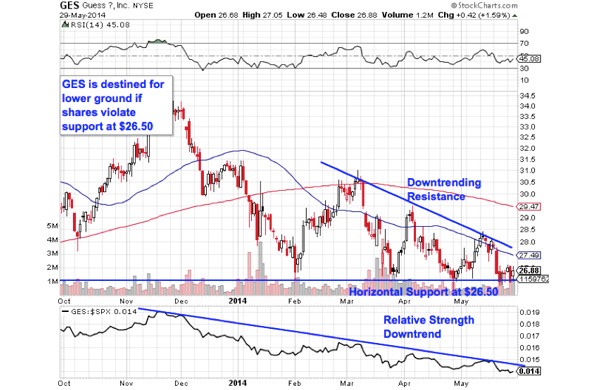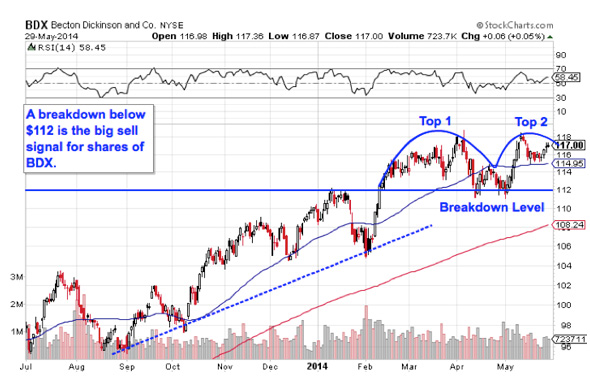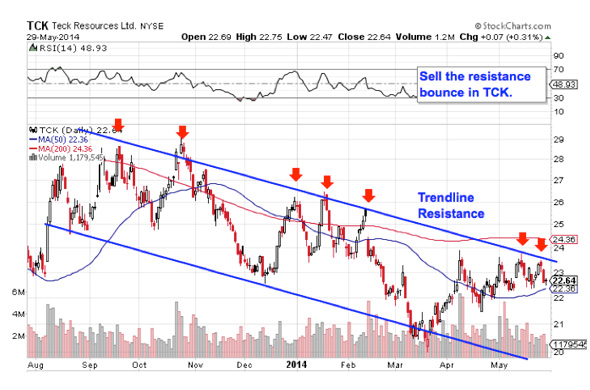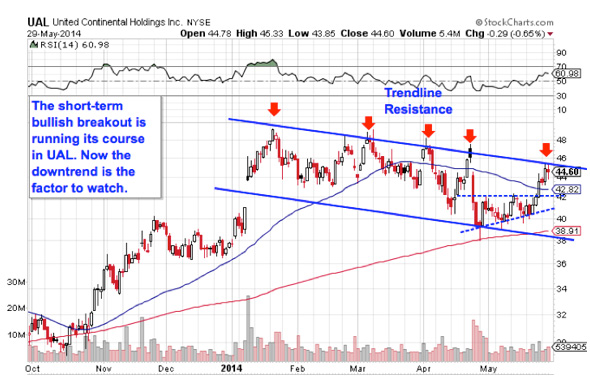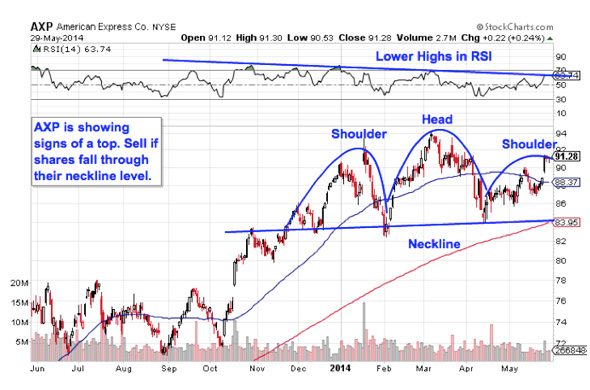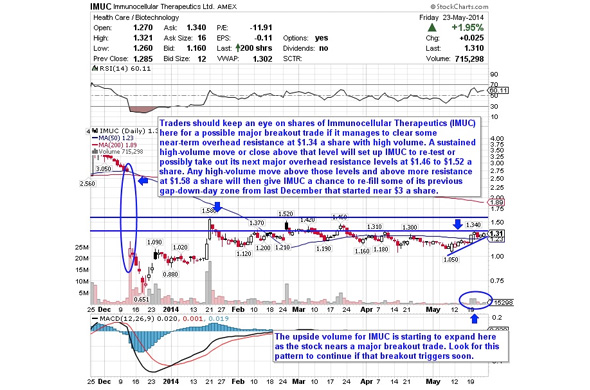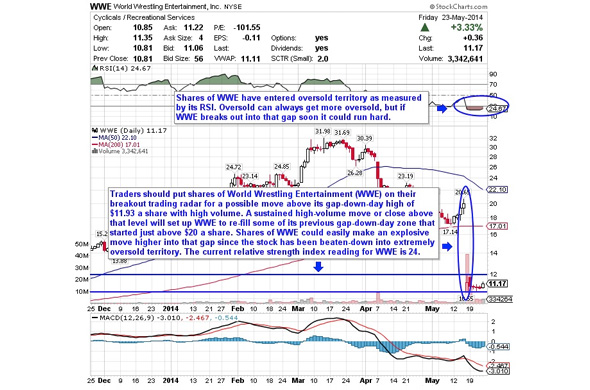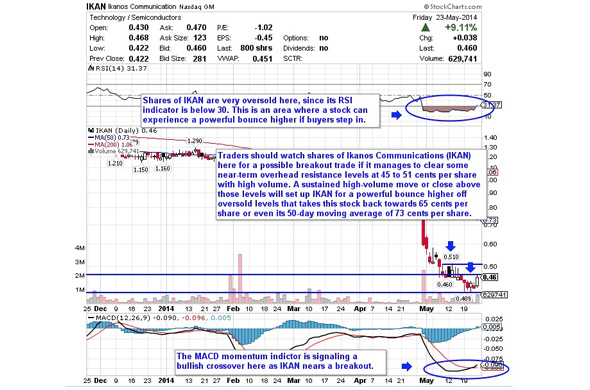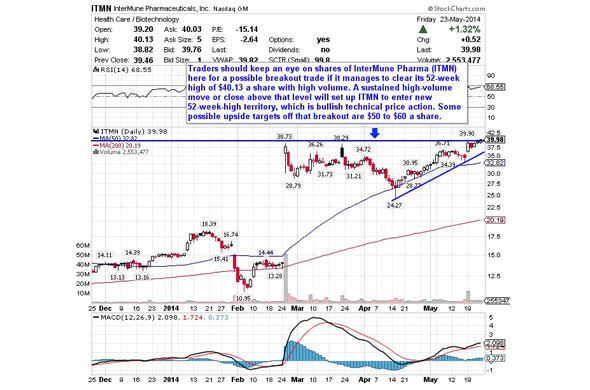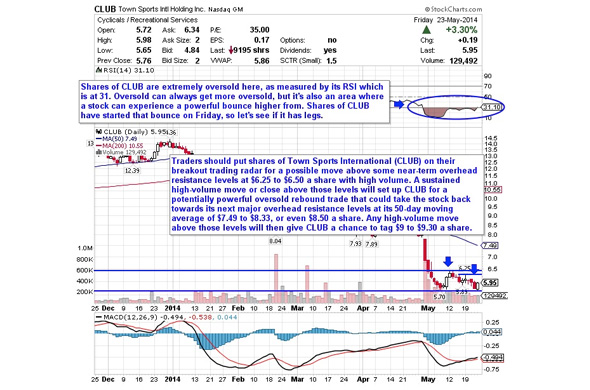Once again its possible to witness the huge skill-set owned by managers hired by 3G, the private equity firm backed by the Brazilian trio who controls AB-InBev (BUD): Lemann, Sicupira and Telles. This time, the trio is outperforming the market with their investment in Burger King Worldwide (BKW), which has returned 40% to its owners since its IPO in June 2012. This more than triples McDonald's (MCD) performance during the same period.
Third Quarter Results
After an aggressive reorganization process that re-franchised most of its restaurant locations, Burger King has finished this quarter with just 74 company-owned restaurants, down by 521 restaurants year-over-year. Thanks to its cost-cutting strategies and its successful re-franchising strategy (which lowers Capex in an extraordinary way) the company was able to post stunning results: If you exclude amortization and other special items, Earnings Per Share (EPS) were up by more than 35%, while operating cash-flow grew by 17%.
Top 10 Restaurant Stocks To Buy For 2015: Richoux Group PLC (RIC)
Richoux Group plc is a United Kingdom-based company engaged in the operation of restaurants. The Company has three segments: Richoux, Villagio Zippers and Dean�� Diner. Richoux restaurants operate in the areas of central London. The restaurants are open all day for breakfast, lunch, afternoon tea and dinner. The restaurants also offers patisserie. Zippers is a spacious, stylish and contemporary restaurant with a relaxed ambience. Dean's Diner offers a range of freshly prepared dishes. Villagio is a modern local Italian restaurant with a menu suitable for the whole family. The Company�� subsidiaries include Newultra Limited and Richoux Limited.
Advisors' Opinion: - [By Sally Jones]
Richmont Mines Inc. (RIC)
Down 70% over 12 months, Richmont Mines Inc. has a market cap of $56.23 billion, and trades with a P/B of 0.60.
- [By Roberto Pedone]
Richmont Mines (RIC) engages in the mining, exploration and development of mining properties, principally gold in Canada. This stock closed up 2.4% to $1.68 in Tuesday's trading session.
Tuesday's Range: $1.61-$1.68
52-Week Range: $1.31-$5.50
Tuesday's Volume: 76,000
Three-Month Average Volume: 101,786
From a technical perspective, RIC bounced higher here right off its 50-day moving average of $1.59 with decent upside volume. This stock has been uptrending strong for the last month and change, with shares moving higher from its low of $1.31 to its recent high of $1.71. During that move, shares of RIC have been making mostly higher lows and higher highs, which is bullish technical price action. That move has now pushed shares of RIC within range of triggering a near-term breakout trade. That trade will hit if RIC manages to take out some near-term overhead resistance at $1.71 to $1.80 with high volume.
Traders should now look for long-biased trades in RIC as long as it's trending above its 50-day at $1.59 or above more near-term support levels at $1.50 to $1.44 and then once it sustains a move or close above those breakout levels with volume that hits near or above 101,786 shares. If that breakout triggers soon, then RIC will set up to re-test or possibly take out its next major overhead resistance levels at $2.10 to $2.20. Any high-volume move above those levels will then give RIC a chance to tag its 200-day moving average at $2.48.
Top 10 Restaurant Stocks To Buy For 2015: Planet Platinum Ltd (PPN)
Planet Platinum Limited is an Australia-based company engaged in the operation of Showgirls Bar 20 and the on-going rental of property in Elsternwick. The Company operates in two segments: hospitality and entertainment and property rental businesses. The Company�� hospitality and entertainment segment comprises operations of Showgirls Bar 20 in Melbourne and is engaged in the nightclub through the provision of beverages and adult entertainment. Property segment comprise maintaining of rental property at Home Street, Elsternwick. The Company continues to receive lease rentals from its Home Street property. The investment property is located at 12 Home Street, Elsternwick Victoria.
Advisors' Opinion: - [By Tabitha Jean Naylor]
Americans consume a lot of chicken. It estimated that Americans consume about 81 pounds of poultry per year, per capita. With there being upwards of 310 million people living in the United States, it is no wonder why poultry production is big business. Two of the biggest names in poultry production are Tyson Foods (NYSE: TSN) and Pilgrim's Pride (NASDAQ: PPN).
5 Best Japanese Stocks To Buy Right Now: Arcos Dorados Holdings Inc (ARCO)
Arcos Dorados Holdings Inc., incorporated on December 9, 2010, is a McDonald�� franchisee. As of December 31, 2010, the Company operated or franchised 1,755 McDonald��-branded restaurants, which represented 6.7% of McDonald�� total franchised restaurants globally. It operates McDonald��-branded restaurants under two different operating formats, Company-operated restaurants and franchised restaurants. As of December 31, 2010, of its 1,755 McDonald��-branded restaurants in the territories, 1,292 (or 74%) were Company-operated restaurants and 463 (or 26%) were franchised restaurants. It generates revenues from two sources: sales by Company-operated restaurants and revenues from franchised restaurants, which consist of rental income, which is based on the greater of a flat fee or a percentage of sales reported by franchised restaurants. As of December 31, 2010, it owned the land for 510 of its restaurants (totaling approximately 1.2 million square meters) and the buildings for all but 12 of its restaurants. It divides its operations into four geographical divisions: Brazil; the Caribbean division, consisting of Aruba, Curacao, French Guiana, Guadeloupe, Martinique, Puerto Rico and the United States Virgin Islands of St. Croix and St. Thomas; North Latin America division (NOLAD), consisting of Costa Rica, Mexico and Panama, and South Latin America division (SLAD), consisting of Argentina, Chile, Colombia, Ecuador, Peru, Uruguay and Venezuela. As of December 31, 2010, 35.1% of its restaurants were located in Brazil, 29.7% in SLAD, 27.1% in NOLAD and 8.1% in the Caribbean division. The Company conducts its business through its indirect, wholly owned subsidiary Arcos Dorados B.V.
Company-Operated and Franchised Restaurants
The Company operates its McDonald��-branded restaurants under two basic structures: Company-operated restaurants operated by the Company and franchised restaurants operated by franchisees. Under both operating alternatives the real estate location may ! either be owned or leased by the Company. It owns, fully manages and operates the Company-operated restaurants and retains any operating profits generated by such restaurants, after paying operating expenses and the franchise and other fees owed to McDonald�� under the Master Franchise Agreements (MFAs). In Company-operated restaurants, it assumes the capital expenditures for the building and equipment of the restaurant and, if it owns the real estate location, for the land as well. Under its franchise arrangements, franchisees provide a portion of the capital required by initially investing in the equipment, signs, seating and decor of their restaurants, and by reinvesting in the business over time. It is required by the MFAs to own the real estate or to secure long-term leases for franchised restaurant sites. It subsequently leases or subleases the property to franchisees.
In exchange for the lease and services, franchisees pay a monthly rent to the Company, based on the greater of a fixed rent or a certain percentage of gross sales. In addition to this monthly rent, it collects the monthly continuing franchise fee, which generally is 5% of the United States dollar equivalent of the restaurant�� gross sales, and pays these fees to McDonald�� pursuant to the MFAs. However, if a franchisee fails to pay its monthly continuing franchise fee, it remains liable for payment in full of these fees to McDonald��. As of December 31, 2010, it was engaged in several joint ventures, which collectively owned 24 restaurants, in Argentina, Chile and Colombia.
Restaurant Categories
The Company classifies its restaurants into one of four categories: freestanding, food court, in-store and mall stores. Freestanding restaurants are the type of restaurant, which have ample indoor seating and include a drive-through area. Food court restaurants are located in malls and consist of a front counter and kitchen and do not have their own seating area. In-store restaurants are part ! of a larg! er building and resemble freestanding restaurants, except for the lack of a drive-through area. Mall stores are located in malls like food court restaurants, but have their own seating areas. As of December 31, 2010, 808 (or 46.2%) of its restaurants were freestanding, 359 (or 20.5%) were food court, 265 (or 15.1%) were in-stores and 319 (or 18.2%) were mall stores. In addition, it has four non-traditional stores, such as food carts.
Reimaging
As of December 31, 2010, the Company had completed the reimaging of 308 of 1,569 restaurants. Many of the reimaging projects include the addition of McCafe locations to the restaurant. It has developed system-wide guidelines for the interior and exterior design of reimaged restaurants.
McCafe Locations and Dessert Centers
McCafe locations are stylish, separate areas within restaurants where customers can purchase a range of customizable beverages, including lattes, cappuccinos, mochas, hot and iced premium coffees and hot chocolate. As of December 31, 2010, there were 267 McCafe locations in the Territories, of which 12% were operated by franchisees. Argentina, with 71 locations, has McCafe locations, followed by Brazil, with 67 locations. In addition to McCafe locations, it has Dessert Centers. Dessert Centers operate from existing restaurants, but depend on them for supplies and operational support. As of December 31, 2010, there were 1,306 Dessert Centers in the Territories.
Product Offerings
The Company�� menus feature three tiers of products: affordable entry-level options, such as its Big Pleasures, Small Prices or Combo del Dia (Daily Extra Value Meal) offerings, core menu options, such as the Big Mac, Happy Meal and Quarter Pounder, and premium options, such as Big Tasty or Angus premium hamburgers and chicken sandwiches and low-calorie or low-sodium products, which are marketed through common platforms rather than as individual items. These platforms can be based on the ty! pe of pro! ducts, such as beef, chicken, salads or desserts, or on the type of customer targeted, such as the children�� menu.
Advisors' Opinion: - [By Brian Pacampara]
Based on the aggregated intelligence of 180,000-plus investors participating in Motley Fool CAPS, the Fool's free investing community, Arcos Dorados Holdings (NYSE: ARCO ) , which operates McDonald's (NYSE: MCD ) franchises in Latin America, has earned a coveted five-star ranking.
- [By Rich Duprey]
Latin American McDonald's franchisee�Arcos Dorados (NYSE: ARCO ) announced today its second-quarter dividend of $0.0596�per share on its Class A and Class B stock, slightly lower than the steady rate of $0.0597 per share it's paid since 2011.
Top 10 Restaurant Stocks To Buy For 2015: Country Style Cooking Restaurant Chain Co Ltd (CCSC)
Country Style Cooking Restaurant Chain Co., Ltd. (CSC Cayman), incorporated on August 14, 2007, is a quick service restaurant chain in China. The Company offers delicious, everyday Chinese food. The Company conducts all of its restaurant operations through CSC China and its subsidiaries. As of June 30, 2012, it had 256 restaurants, including 124 restaurants in Chongqing municipality and 85 restaurants in Sichuan province.
Chongqing municipality and Sichuan province cover a region of 110 million people in Southwest China. CSC Cayman directly operates all of its restaurants. Its standard menu features its main dishes prepared in the Sichuan style, as well as a selection of other dishes, appetizers, desserts and beverages. The Company periodically offers new dishes and seasonal menu selections.
The Company competes with McDonald��, KFC and Yoshinoya.
Advisors' Opinion: - [By CRWE]
Country Style Cooking Restaurant Chain Co., Ltd (NYSE:CCSC), a fast-growing quick service restaurant chain in China, plans to release its unaudited second quarter 2012 financial results on Tuesday, August 14, 2012, after the market closes.
Top 10 Restaurant Stocks To Buy For 2015: Ignite Restaurant Group Inc (IRG)
Ignite Restaurant Group, Inc., incorporated on February 4, 2002, operates two restaurant brands, Joe's Crab Shack (Joe's) and Brick House Tavern + Tap (Brick House). The Company�� Joe's Crab Shack and Brick House Tavern + Tap operate in a diverse set of markets across the United States. Joe's Crab Shack is a national chain of casual seafood restaurants serving a variety of seafood items, with an emphasis on crab. Brick House Tavern + Tap is a casual restaurant brand that provides guests a gastro pub experience by offering a blend of menu items. As of December 31, 2012, the Company owned and operated 144 restaurants in 33 states. In September 2013, Ignite Restaurant Group Inc announced the opening of its newest Joe's Crab Shack restaurant, located in Newark, New Jersey.
Joe's Crab Shack
The Company�� Joe's Crab Shack offers an outdoor patio for guests to enjoy eating and drinking and a children's playground. Joe's also has many locations that are located on waterfront property. Interior design elements include a nautical, vacation theme to invoke memories of beach vacations and a genuine crab shack experience. Joe's Crab Shack restaurants have over 200 seats. Many of the Company�� restaurants also include a small gift shop where guests can purchase souvenirs to commemorate their dining experience. Joe's Crab Shack also leverages its crab-forward menu with other crab items, including Made-From-Scratch Crab Cakes, Crab Nachos and Crazy-Good Crab Dip. In addition to its core crab-focused menu, Joe's also offers a range of entrees featuring a variety of seafood, including the Get Stuffed Snapper, Surf 'N Turf Burger and The Big Hook Up, as well as a range of traditional seafood entrees like the Fisherman's Platter. Joe's also offers several out of water options, such as Pan Fried Cheesy Chicken and Whiskey Smoked Ribs. In addition, alcoholic beverages include the Shark Bite, Category 5 Hurricane and Mason Jar cocktails emerging as guests' top choices. Joe's menu inc! ludes more than 29 items made with either Queen, Snow, Dungeness or King Crabs sourced from government regulated and sustainable fisheries. Its menu offers 14 appetizers, including Made-From-Scratch Crab Cakes, Crab Nachos and Crazy-Good Crab Dip, and over 50 entrees, including Steampots, Crab in a Bucket, Skillet Paella, Stuffed Snapper and out of water options like Whiskey Smoked Ribs.
Brick House Tavern + Tap
The Company�� Brick House's interior decor includes custom lighting, dark mahogany woods, open sight lines, high definition television (HD TVs), and an inviting fireplace. In addition to a traditional dining room and bar area, Brick House also offers large communal tables and a section of leather recliners positioned in front of large HD TVs, where guests receive their own TV tray for dining. Outdoor seating is also available on the patio or around an open fire pit at nearly all locations. Both food and beverages are served by personable and engaging service staff. The typical Brick House restaurant is approximately 8,500 square feet and averages approximately 250 seats, which includes both traditional tables and seating options. Brick House offers its guests a selection of contemporary tavern food. Brick House's menu includes 17 appetizers and over 53 entrees. Handcrafted appetizers include Deviled Eggs, Meatloaf Sliders, Brick Pizza, Meat and Cheese Board and Fried Stuffed Olives. Brick House offers an array of burgers, including The Kobe, which is hand formed from American Wagyu beef. Guests can also choose from a selection of homemade entrees, such as Drunken Chops, BBQ Baby Backs, Chicken & Waffles, and its Prime Rib Sandwich. In addition, Brick House's Brick Burgers, include the Gun Show Burger and the Black & Bleu Burger. Brick House's beverage selection includes imported and domestic beers along with hand-pulled cask beer. All Brick House restaurants have a bar that supports a variety of liquor drinks, wine and beer cocktails like the Shandy and Bee Sting, a! s well as! specialty cocktails like the Dark & Stormy, Moscow Mule and The Zombie.
The Company competes with Red Lobster, Bonefish Grill, Landry's Seafood, Bubba Gump Shrimp Company, BJ's Restaurants, Yard House, Cheesecake Factory, Bravo Brio and Buffalo Wild Wings, Applebee's, Chili's, T.G.I. Friday's, Texas Roadhouse and Outback Steakhouse.
Advisors' Opinion: - [By Seth Jayson]
Margins matter. The more Ignite Restaurant Group (Nasdaq: IRG ) keeps of each buck it earns in revenue, the more money it has to invest in growth, fund new strategic plans, or (gasp!) distribute to shareholders. Healthy margins often separate pretenders from the best stocks in the market. That's why we check up on margins at least once a quarter in this series. I'm looking for the absolute numbers, so I can compare them to current and potential competitors, and any trend that may tell me how strong Ignite Restaurant Group's competitive position could be.
- [By Victor Selva]
The firm is currently Zacks Rank # 3 - Hold, and it also has a longer-term recommendation of ��nderperfom.��For investors looking for a Zacks Rank # 1 ��Strong Buy, Ignite Restaurant Group Inc. (IRG) and The Wendy's Company (WEN) could be the options.
Top 10 Restaurant Stocks To Buy For 2015: Noodles & Co (NDLS)
Noodles & Company, incorporated on December 19, 2002, is a casual restaurant concept offering lunch and dinner. The Company offers noodle and pasta dishes, staples of many cuisines, with the goal of delivering fresh ingredients and flavors globally under one roof from Pad Thai to Mac & Cheese. The Company�� globally inspired menu includes a variety of cooked-to-order dishes, including noodles and pasta, soups, salads and sandwiches, which are served on china by its friendly team members.
As of May 28, 2013, including the 16 Company owned restaurants and one franchise restaurant opened in 2013. The Company opened 39 new company owned restaurants and six franchise restaurants. In 2012, the Company began using Your World Kitchen to describe the breadth of its offering and its customers' dining experience.
Advisors' Opinion: - [By Chris Hill]
Noodles & Company's (NASDAQ: NDLS ) stock continues to rise. Westport Innovations (NASDAQ: WPRT ) experiences a pullback. Southwest Airlines (NYSE: LUV ) and DISH Network (NASDAQ: DISH ) team up to offer live TV to passengers. And it was a bad day for anyone who thinks Amazon.com (NASDAQ: AMZN ) is overvalued. In this installment of Investor Beat, Jason and Matt discuss four stocks making big moves today.
Top 10 Restaurant Stocks To Buy For 2015: Popeyes Louisiana Kitchen Inc (PLKI)
Popeyes Louisiana Kitchen Inc, formerly AFC Enterprises, Inc. incorporated on July 27, 1992, develops, operates, and franchises quick-service restaurants (QSRs or restaurants) under the trade names Popeyes Chicken & Biscuits and Popeyes Louisiana Kitchen (collectively Popeyes). Within Popeyes, it manages two business segments: franchise operations and ompany-operated restaurants. Within the QSR industry, Popeyes distinguishes itself with a Louisiana style menu, which features spicy chicken, chicken sandwiches, chicken tenders, fried shrimp and other seafood, red beans and rice and other regional items. As of December 25, 2012, the Company operated and franchised 2,104 Popeyes restaurants in 47 states, the District of Columbia, Puerto Rico, Guam, the Cayman Islands and 26 foreign countries. As of December 25, 2012, of its 1,634 domestic franchised restaurants, approximately 70% were concentrated in Texas, California, Louisiana, Florida, Illinois, Maryland, New York, Georgia, Virginia and Mississippi. Of its 425 international franchised restaurants, approximately 60% were located in Korea, Canada, and Turkey. Of its 45 Company-operated restaurants, approximately 80% were concentrated in Louisiana and Tennessee. In November 2012, the Company acquired 27 restaurants in Minnesota and California.
As of December 25, 2012, the Company had 340 franchisees operating restaurants within the Popeyes system. During the fiscal year ended December 25, 2012 (fiscal 2012), the Popeyes system opened 141 restaurants, which included 75 domestic and 65 international restaurants. During fiscal 2011, the Popeyes system permanently closed 75 restaurants, resulting in 66 net restaurant openings, compared to 65 net openings. As of December 25, 2012, it leased 12 restaurants and subleased 44 restaurants to franchisees. In addition, it leased three properties to unrelated third parties. Of the restaurants leased or subleased to franchisees, 29 were located in Texas and 16 were located in Georgia. On November 7, 2012,! the Company entered into a new agreement with the King Features Syndicate Division of Hearst Holdings, Inc., licensor of the Popeye the Sailorman and associated cartoon characters.
Advisors' Opinion: - [By Sue Chang]
Popeyes Louisiana Kitchen Inc. (PLKI) �is expected to report first-quarter earnings of 45 cents a share.
- [By Rick Aristotle Munarriz]
Alamy Fried chicken and waffles is a staple menu item at countless soul food and comfort food restaurants, but that's not stopping Burger King (BKW) from trying to give the meal a fast-food spin. Burger King is testing a new sandwich in the Northeast that takes the breaded chicken patty used in its Classic Crispy Chicken Sandwich from its King Deals Value Menu and replaces the bun with a split waffle. Burger King's Chicken & Waffle Sandwich isn't as hearty as the meal that it's based on. It's selling for as little as $2.29. But the chain's latest attempt to turn heads with a unique menu item will at least attract curious nibblers if it does decide to broaden the offering across the country. Waffling About Burger King isn't the first popular chain to attempt to reinvent this classic dish. As Nation's Restaurant News points out, last summer, Popeyes Louisiana Kitchen (PLKI) offered Chicken Waffle Tenders -- consisting of chicken tenders dipped in a vanilla maple-scented waffle batter, served with a honey maple dipping sauce. DineEquity's (DIN) IHOP did it three years ago by combining its chicken strips with Belgian waffle quarters. Yum! Brands (YUM) tried to breathe new life into its breakfast business last summer by testing a Waffle Taco -- an egg, sausage, and waffle breakfast sandwich. Even if it doesn't succeed -- and some of the early taste tests haven't been very flattering to the chain's new sandwich -- it's at least comforting to see that Burger King isn't just copying McDonald's (MCD) the way that it has for the past couple of years. Burger King followed McDonald's in offering fancy coffee drinks, fresh fruit smoothies, and popcorn chicken. It has gone on to roll out doppelgangers of the Egg McMuffin and McRib sandwiches. In November, it introduced the Big King, which any patron will quickly recognize as a body double to the Big Mac. Then again, it's not as if following McDonald's lead is such a clever idea right now. The world's largest re
Top 10 Restaurant Stocks To Buy For 2015: DineEquity Inc (DIN)
DineEquity, Inc., incorporated on May 07, 1976, owns franchise and operate two restaurant concepts: Applebee's Neighborhood Grill & Bar, (Applebee's), in the bar and grill segment of the casual dining category of the restaurant industry, and International House of Pancakes (IHOP), in the family dining category of the restaurant industry. As of December 31, 2012, the franchise operations segment consisted of 2,011 restaurants operated by Applebee's franchisees in the United States, one United States territory and 15 foreign countries and 1,569 restaurants operated by IHOP franchisees and area licensees in the United States, two United States territories and five foreign countries. As of December 31, 2012, the Company restaurant operations segment consisted of 23 Applebee's Company-operated restaurants, 10 IHOP Company-operated restaurants and two IHOP restaurants reacquired from franchisees and operated by IHOP on a temporary basis until refranchised. Financing operations revenue primarily consists of interest income from the financing of franchise fees and equipment leases, as well as sales of equipment associated with refranchised IHOP restaurants and a portion of franchise fees for restaurants taken back from franchisees not allocated to IHOP intellectual property. In October 2012, it completed the refranchising program and completed the transitioning to a 99% franchised restaurant system.
Applebee's
The Company develops, franchises and operates restaurants in the bar and grill segment of the casual dining category of the restaurant industry under the name Applebee's Neighborhood Grill & Bar. As of December 31, 2012, 68 franchise groups operated 2,011 of these restaurants and 23 restaurants were Company-operated. The restaurants were located in 49 states, one United States territory and 15 countries outside of the United States. During the year ended December 31, 2012, 20 domestic franchise restaurants opened, six domestic franchise restaurants closed. 154 Company-operated! restaurants were franchised. The number of restaurants held by an individual franchisee ranges from one to 438 restaurants. As of December 31, 2012, it is focusing on international franchising primarily in Canada, Mexico, Central and South America, and the Mediterranean/Middle East. As of December 31, 2012, there were 149 international Applebee's franchise restaurants. During 2012, 14 international franchise restaurants opened and 13 international franchise restaurants closed.
IHOP
The Company develops franchises and operates restaurants in the family dining category of the restaurant industry under the names IHOP and International House of Pancakes. As of December 31, 2012 there were a total of 1,581 IHOP restaurants of which 1,404 were subject to franchise agreements, 165 were subject to area license agreements, 10 were Company-operated restaurants and two restaurants were reacquired from franchisees and operated by IHOP on a temporary basis. The Company owns and operates 10 IHOP restaurants in the Cincinnati market area primarily to test new remodel programs, operating procedures, products, technology, cooking platforms and service models. IHOP restaurants are located in all 50 states of the United States, the District of Columbia, Puerto Rico and the United States Virgin Islands and internationally in Canada, the Dominican Republic, Guatemala, Mexico and the United Arab Emirates. As of December 31, 2012, the area licensee for the state of Florida and certain counties in Georgia operated or sub-franchised a total of 152 IHOP restaurants, and the area licensees for the province of British Columbia, Canada operated or sub-franchised a total of 13 IHOP restaurants. As of December 31, 2012, the Company had signed commitments and options from franchisees to build 245 IHOP restaurants over the next 17 years, comprised of 5 restaurants under single-restaurant or non-traditional development agreements, 120 restaurants under multi-restaurant development agreements and 63 restaurants! under in! ternational development agreements. As of December 31, 2012, there were 1,525 domestic IHOP franchise and area license restaurants. During 2012, its franchisees and area licensees opened 40 domestic franchise restaurants and 17 domestic franchise and area license restaurants were closed. As of December 31, 2012, there were 44 international IHOP franchise and area license restaurants. During 2012, its franchisees opened eight international franchise restaurants and no restaurants were closed.
The Company competes with Chili's, T.G.I. Friday's, Ruby Tuesday's, Denny's, Cracker Barrel Old Country Store and Bob Evans Restaurants.
Advisors' Opinion: - [By Rick Aristotle Munarriz]
AP/Jae C. Hong For all the talk about drones replacing parcel carriers or self-driving cars disrupting the taxi industry, there's a bigger tech revolution happening in the restaurant industry right now that may displace workers far sooner than anything futurists foresee in those other industries. The arrival of tablets and smartphone apps that detail menu items, take orders, and let you settle up your tab at the en of the meal will be a big theme among casual dining chains and even a few independent foodie haunts this year. Brinker International's (EAT) Chili's, DineEquity's (DIN) Applebee's, and a handful of San Francisco fine dining establishments are leading the push to add the technology, which will make waiters and waitresses less necessary. None of the chains have said that these tech initiatives will lead them to reduce waitstaff headcount -- but it doesn't take a lot of foresight to connect the dots. If folks are using table-side tablets to place orders and ask for drink refills, or firing up a smartphone app to pay at the end of a meal, that naturally translates into fewer front-of-house employees needed to keep an eatery going. Order Up In fact, some industry leaders outright deny that mobile tech will displace staff. "This really isn't a labor play," DineEquity CEO Julia Stewart said on CNBC late last year, explaining Applebee's move to deploy 100,000 tablets this year -- one at every table. "It's not about saving labor. This is really about creating an opportunity to talk to our guest, have an interactive conversation with our guest, and give our guest a lot more opportunities." At first, a waitstaff will be instrumental in assisting customers as they use the tablets to place orders or pay their bills. There will also be patrons who are apprehensive about embracing the technology, and Applebee's will still have waiters taking orders the old-fashioned way for people who prefer talking to a person. Chili's is going with a less-comprehensive table
- [By Rick Aristotle Munarriz]
Alamy Companies can make brilliant moves, but there are also times when things don't work out quite as planned. From an automaker committing to add thousands of high-paying jobs in the new year to a home craft icon's payroll going the other way, here's a rundown of the week's most interesting moves in the business world. Sysco (SYY) -- Winner Leave it to a food company to eat the competition. Sysco is the country's largest food service company, providing restaurants, schools, and other institutions with their edibles. It's about to get bigger. Sysco kicked off the week by announcing a deal valued at $3.5 billion in cash and stock for its nearest competitor, US Foods. There isn't likely to be a lot of regulatory hassle over the combination. This is a highly fragmented sector, with Sysco commanding just 18 percent of the overall market. It will be 27 percent after completing the deal. Given the nature of the business, there are advantages of being big, and Sysco is about to get substantially bigger at a reasonable price relative to its own valuation. lululemon athletica (LULU) -- Loser Shares of Lululemon stumbled 12 percent on Thursday after the retailer of high-end yoga apparel offered up a gloomy outlook for the holiday quarter. The Canadian chain spooked investors by forecasting flat comparable-store sales for the period. Its profit guidance also fell short of expectations. For a hot growth stock like Lululemon, proving ordinary after years of heady store-level sales growth isn't enough. Ford (F) -- Winner Things have been going well for automakers, and things are about to get even better for Ford. The popular automaker revealed in a presentation on Thursday that it plans to hire 3,000 salaried workers in 2014 -- and we're not talking about low-paying jobs here. Most of these new jobs will be in engineering and product development. Ford is also opening three plants overseas, but the stateside job creation will be significant. Martha Stewart Living Om
- [By Ben Levisohn]
Shares of Ruby Tuesday have gained 4.8% to $7.59 this morning, making it the third-best performer in the S&P 1500 and outpacing other restaurant stocks. Jack in the Box (JACK) has dropped 0.8% to $38.76, DineEquity (DIN), which operates Applebee’s and IHOP, has gained 0.1%% to 66.12, Denny’s (DENN) has fallen 0.2% to $6.06 and recent-IPO Potbelly (PBPB) has gained 1.7% to $30.73.
Top 10 Restaurant Stocks To Buy For 2015: Einstein Noah Restaurant Group Inc (BAGL)
Einstein Noah Restaurant Group, Inc. (ENRGI), incorporated on October 21, 1992, is an owner/operator, franchisor and licensor of bagel specialty restaurants in the United States. ENRGI operates under the Einstein Bros. Bagels (Einstein Bros.), Noah�� New York Bagels (Noah��) and Manhattan Bagel Company (Manhattan Bagel) brands. ENRGI operates in three business segments: the Company-owned restaurants segment, the manufacturing and commissary segment, and the franchise and license segment. The Company-owned restaurants segment includes the restaurants that it owns. The manufacturing and commissary segment produces and distributes bagel dough and other products to its Company-owned restaurants, licensees and franchisees and other third parties. The franchise and license segment earns royalties and other fees from the use of trademarks and operating systems developed for the Einstein Bros., Noah�� and Manhattan Bagel brands.
During the fiscal year ended January 1, 2013 (fiscal 2012), ENRGI acquired eight restaurants and opened an additional 15 Company-owned restaurants. It closed one Company-owned restaurant during fiscal 2012. On January 31, 2012, the Company sold a Company-owned restaurant. As of January 1, 2013, it had 816 restaurants in 39 states and in the District of Columbia. In January 2013, the Company opened an Einstein Bros. franchise in Montana. Its product offerings include fresh-baked bagels and other bakery items baked onsite, ma de-to-order breakfast and lunch sandwiches on a range of bagels, breads or wraps, gourmet soups and salads, assorted pastries, premium coffees and an assortment of snacks. Its manufacturing and independent distribution network delivers ingredients that are delivered fresh to its restaurants.
Company-owned restaurants
Einstein Bros. offers a menu that provides food for breakfast and lunch, including fresh-baked bagels and hot breakfast sandwiches, freshly prepared lunch sandwiches, cream cheese and other spreads, specia! lty coffees and teas, soups, salads and other menu offerings. Noah�� is a neighborhood-based bakery/deli restaurant that serves fresh-baked bagels, hot breakfast sandwiches, made-to-order deli-style sandwiches, cream cheese and other spreads, specialty coffees and teas, soups, salads and other menu offerings. Manhattan Bagel provides a traditional New York style boil and baked bagel. Manhattan Bagel also serves a range of grilled sandwiches, freshly made deli sandwiches, freshly prepared breakfast sandwiches, soups, and a range of other fresh-baked sweets. Similar to Einstein Bros. and Noah��, Manhattan Bagel also features a line of fresh brewed coffees and specialty coffee/espresso beverages. During fiscal 2012, ENRGI generated approximately 90% of its total revenue from restaurant sales at its Company-owned restaurants.
Manufacturing and Commissaries
ENRGI operates a bagel dough manufacturing facility in Whittier, California and has contracts with two suppliers to produce bagel dough and sweets to the specifications. These facilities provide frozen dough, partially-baked frozen bagels and fully baked sweets for its Company-owned restaurants, franchisees and licensees. These operations provide the restaurants with food products, such as sliced meats, cheeses, and/or certain salad ingredients. It has recipes and production processes for the bagel dough, cream cheese and coffee. Frozen, or partially baked and frozen, bagel dough is shipped to all of its Company-owned, franchised and licensed restaurants where the dough is then baked onsite. Its purchases other ingredients used in the restaurants, such as meat, lettuce, tomatoes and condiments, from a select group of third party suppliers.
Franchise and Licensing
ENRGI offers Einstein Bros. franchises to qualified area developers. As of January 1, 2013, the Company was registered to offer Einstein Bros. franchises in 49 states and the District of Columbia. It also has a franchise base in the Manhatt! an Bagel ! brand. Its licensees are located primarily in colleges and universities, hospitals, airports and military bases. As of February 25, 2013, it had 28 development agreements in place for 136 total restaurants, 34 of which have already opened. During fiscal 2012, it opened 13 franchised locations and 27 licensed locations. During fiscal 2012, approximately 3% of its total revenue was generated by the Company�� franchise and license operations.
Advisors' Opinion: - [By John Udovich]
At the end of last week, small cap sandwich stock Potbelly Corp (NASDAQ: PBPB) had a delicious surge of 120% for its IPO���meaning its probably a good idea to see whether its still worth getting in on the action plus take a look at the performance of peers�Cosi Inc (NASDAQ: COSI), Panera Bread Co (NASDAQ: PNRA) and Einstein Noah Restaurant Group, Inc (NASDAQ: BAGL) as Subway remains private. I should mention that competing with Subway in the sandwich business is a tall order as they have 40,229 restaurants in 102 countries and territories as of early September���making them the�largest single-brand restaurant chain and the largest restaurant operator globally. However, Potbelly Corp and its peers Cosi Inc, Panera Bread Co and Einstein Noah Restaurant Group aren�� slugging it out directly with Subway.
Top 10 Restaurant Stocks To Buy For 2015: Brinker International Inc (EAT)
Brinker International, Inc. (Brinker), incorporated on September 30, 1983, owns, develops, operates and franchises the Chili�� Grill & Bar (Chili��) and Maggiano�� Little Italy (Maggiano��) restaurant brands. As of June 27, 2013 (fiscal 2013), the Company's system of Company-owned and franchised restaurants included 1,591 restaurants located in 50 states, and Washington, D.C. It also has restaurants in the Bahrain, Brazil, Canada, Columbia, Costa Rica, Dominican Republic, Ecuador, Egypt, El Salvador, Germany, Guatemala, Honduras, India, Indonesia, Japan, Jordan, Kuwait, Lebanon, Malaysia, Mexico, Oman, Peru, Philippines, Qatar, Russia, Saudi Arabia, Singapore, South Korea, Syria, Taiwan, United Arab Emirates and Venezuela.
Chili�� Grill & Bar
Chili�� operates in the Bar and Grill category of casual dining. The Company has operations worldwide, with locations in 32 foreign countries and two United States territories. Chili�� menu features items, such as Baby Back Ribs smoked in-house, Big Mouth Burgers, Sizzling Fajitas, hand-battered Chicken Crispers and house-made Chips and Salsa. The all-day menu offers a range of appetizers, entrees and desserts. A special lunch section is available on weekdays. In addition to its flavorful food, Chili�� offers a line of alcoholic beverages available from the bar, including Margaritas and draft beer. During fiscal 2013, food and non-alcoholic beverage sales constituted approximately 86.1% of Chili�� total restaurant revenues, with alcoholic beverage sales accounted for the remaining 13.9%.
Maggiano�� Little Italy
Maggiano�� is a full-service, casual dining Italian restaurant brand. Its Maggiano�� restaurants feature individual and family-style menus, and its restaurants also have banquet facilities designed to host party business or social events. It has lunch and dinner menu offering chef-prepared, classic Italian-American fare in the form of appetizers, entrees with portions of pasta, ch! icken, seafood, veal and prime steaks, and desserts. The Company�� Maggiano�� restaurants also offer a range of alcoholic beverages, including wines. In addition, Maggiano�� offers a full carryout menu, as well as local delivery services. During fiscal 2013, food and non-alcoholic beverage sales constituted approximately 83.0% of Maggiano�� total restaurant revenues, with alcoholic beverage sales accounted for the remaining 17.0%.
Advisors' Opinion: - [By Abba's Aces]
On a financial basis, the things I look for are the dividend payouts, return on assets, equity and investment. The company pays a dividend of 1.74% with a payout ratio of 65% of trailing 12-month earnings while sporting return on assets, equity and investment values of 4.1%, 37.7% and 8.2%, respectively, which are all respectable values. The really high return on equity value (37.7%) is an important financial metric for purposes of comparing the profitability which is generated with the money shareholders have invested in the company to that of other companies in the same industry. For comparison, Dunkin' has the third highest ROE out of 12 companies in the mid-cap restaurants industry. It is behind Brinker International (EAT) which has a value of 71.4% and Bloomin' Brands (BLMN) which has a value of 43.5%. Because I believe the market may get a bit choppy here and would like a safety play, I don't believe the 1.74% yield of this company is good enough for me to take shelter in for the time being if I were to initiate a new position.
- [By Victor Selva]
As we can see, the firm has a higher ROE than Wendy麓s and Buffalo Wild Wings, Inc. (BWLD), but far less than the ones from Dunkin Brands Group Inc (DNKN) and Brinker International, Inc. (EAT).

 MORE GURUFOCUS LINKS
MORE GURUFOCUS LINKS 
 633 (1y: +40%) $(function(){var seriesOptions=[],yAxisOptions=[],name='AAPL',display='';Highcharts.setOptions({global:{useUTC:true}});var d=new Date();$current_day=d.getDay();if($current_day==5||$current_day==0||$current_day==6){day=4;}else{day=7;} seriesOptions[0]={id:name,animation:false,color:'#4572A7',lineWidth:1,name:name.toUpperCase()+' stock price',threshold:null,data:[[1370235600000,450.72],[1370322000000,449.31],[1370408400000,445.11],[1370494800000,438.46],[1370581200000,441.811],[1370840400000,438.89],[1370926800000,437.6],[1371013200000,432.19],[1371099600000,435.965],[1371186000000,430.05],[1371445200000,432],[1371531600000,431.77],[1371618000000,423],[1371704400000,416.838],[1371790800000,413.5],[1372050000000,402.54],[1372136400000,402.63],[1372222800000,398.07],[1372309200000,393.78],[1372395600000,396.53],[1372654800000,409.22],[1372741200000,418.49],[1372827600000,420.8],[1373000400000,417.42],[1373259600000,415.05],[1373346000000,422.35],[1373432400000,420.73],[1373518800000,427.288],[1373605200000,426.51],[1373864400000,427.44],[1373950800000,430.195],[1374037200000,430.31],[1374123600000,431.758],[1374210000000,424.95],[1374469200000,426.31],[1374555600000,418.99],[1374642000000,440.51],[1374728400000,438.5],[1374814800000,440.99],[1375074000000,447.79],[1375160400000,453.32],[1375246800000,452.53],[1375333200000,456.676],[1375419600000,462.54],[1375678800000,469.45],[1375765200000,465.25],[1375851600000,464.98],[1375938000000,461.01],[1376024400000,454.45],[1376283600000,467.36],[1376370000000,489.57],[1376456400000,498.5],[1376542800000,497.91],[1376629200000,502.33],[1376888400000,507.74],[1376974800000,501.07],[1377061200000,502.36],[1377147600000,502.96],[1377234000000,501.02],[1377493200000,502.97],[1377579600000,488.59],[1377666000000,490.896],[1377752400000,491.7],[1377838800000,487.216],[1378184400000,488.58],[1378270800000,498.691],[1378357200000,495.27],[1378443600000,498.22],[1378702800000,506.17],[1378789200000,494.64],[1378875600000,467.71],[1378962000000,472.69],[1379048400000,464.9],[1379307600000,450.12],[1379394000000,455.32],[1379480400000,464.68],[1379566800000,472.3],[1379653200000,467.41],[1379912400000,490.64],[1379998800000,489.1],[1380085200000,481.53],[1380171600000,486.22],[1380258000000,482.75],[1380! 517200000,476.75],[1380603600000,487.96],[1380690000000,489.56],[1380776400000,483.41],[1380862800000,483.03],[1381122000000,487.75],[1381208400000,480.94],[1381294800000,486.588],[1381381200000,489.638],[1381467600000,492.812],[1381726800000,496.04],[1381813200000,498.68],[1381899600000,501.114],[1381986000000,504.5],[1382072400000,508.89],[1382331600000,521.362],[1382418000000,519.868],[1382504400000,524.96],[1382590800000,531.91],[1382677200000,525.958],[1382936400000,529.876],[1383022800000,516.678],[1383109200000,524.896],[1383195600000,522.702],[1383282000000,520.03],[1383544800000,526.75],[1383631200000,525.449],[1383717600000,520.92],[1383804000000,512.492],[1383890400000,520.56],[1384149600000,519.048],[1384236000000,520.01],[1384322400000,520.634],[1384408800000,528.16],[1384495200000,524.991],[1384754400000,518.629],[1384840800000,519.55],[1384927200000,515],[1385013600000,521.136],[1385100000000,519.8],[1385359200000,523.74],[1385445600000,533.4],[1385532000000,545.96],[1385704800000,556.07],[1385964000000,551.23],[1386050400000,566.322],[1386136800000,565],[1386223200000,567.901],[1386309600000,560.02],[1386568800000,566.43],[1386655200000,565.55],[1386741600000,561.36],[1386828000000,560.54],[1386914400000,554.43],[1387173600000,557.5],[1387260000000,554.99],[1387346400000,550.77],[1387432800000,544.46],[1387519200000,549.02],[1387778400000,570.09],[1387864800000,567.67],[1388037600000,563.9],[1388124000000,56
633 (1y: +40%) $(function(){var seriesOptions=[],yAxisOptions=[],name='AAPL',display='';Highcharts.setOptions({global:{useUTC:true}});var d=new Date();$current_day=d.getDay();if($current_day==5||$current_day==0||$current_day==6){day=4;}else{day=7;} seriesOptions[0]={id:name,animation:false,color:'#4572A7',lineWidth:1,name:name.toUpperCase()+' stock price',threshold:null,data:[[1370235600000,450.72],[1370322000000,449.31],[1370408400000,445.11],[1370494800000,438.46],[1370581200000,441.811],[1370840400000,438.89],[1370926800000,437.6],[1371013200000,432.19],[1371099600000,435.965],[1371186000000,430.05],[1371445200000,432],[1371531600000,431.77],[1371618000000,423],[1371704400000,416.838],[1371790800000,413.5],[1372050000000,402.54],[1372136400000,402.63],[1372222800000,398.07],[1372309200000,393.78],[1372395600000,396.53],[1372654800000,409.22],[1372741200000,418.49],[1372827600000,420.8],[1373000400000,417.42],[1373259600000,415.05],[1373346000000,422.35],[1373432400000,420.73],[1373518800000,427.288],[1373605200000,426.51],[1373864400000,427.44],[1373950800000,430.195],[1374037200000,430.31],[1374123600000,431.758],[1374210000000,424.95],[1374469200000,426.31],[1374555600000,418.99],[1374642000000,440.51],[1374728400000,438.5],[1374814800000,440.99],[1375074000000,447.79],[1375160400000,453.32],[1375246800000,452.53],[1375333200000,456.676],[1375419600000,462.54],[1375678800000,469.45],[1375765200000,465.25],[1375851600000,464.98],[1375938000000,461.01],[1376024400000,454.45],[1376283600000,467.36],[1376370000000,489.57],[1376456400000,498.5],[1376542800000,497.91],[1376629200000,502.33],[1376888400000,507.74],[1376974800000,501.07],[1377061200000,502.36],[1377147600000,502.96],[1377234000000,501.02],[1377493200000,502.97],[1377579600000,488.59],[1377666000000,490.896],[1377752400000,491.7],[1377838800000,487.216],[1378184400000,488.58],[1378270800000,498.691],[1378357200000,495.27],[1378443600000,498.22],[1378702800000,506.17],[1378789200000,494.64],[1378875600000,467.71],[1378962000000,472.69],[1379048400000,464.9],[1379307600000,450.12],[1379394000000,455.32],[1379480400000,464.68],[1379566800000,472.3],[1379653200000,467.41],[1379912400000,490.64],[1379998800000,489.1],[1380085200000,481.53],[1380171600000,486.22],[1380258000000,482.75],[1380! 517200000,476.75],[1380603600000,487.96],[1380690000000,489.56],[1380776400000,483.41],[1380862800000,483.03],[1381122000000,487.75],[1381208400000,480.94],[1381294800000,486.588],[1381381200000,489.638],[1381467600000,492.812],[1381726800000,496.04],[1381813200000,498.68],[1381899600000,501.114],[1381986000000,504.5],[1382072400000,508.89],[1382331600000,521.362],[1382418000000,519.868],[1382504400000,524.96],[1382590800000,531.91],[1382677200000,525.958],[1382936400000,529.876],[1383022800000,516.678],[1383109200000,524.896],[1383195600000,522.702],[1383282000000,520.03],[1383544800000,526.75],[1383631200000,525.449],[1383717600000,520.92],[1383804000000,512.492],[1383890400000,520.56],[1384149600000,519.048],[1384236000000,520.01],[1384322400000,520.634],[1384408800000,528.16],[1384495200000,524.991],[1384754400000,518.629],[1384840800000,519.55],[1384927200000,515],[1385013600000,521.136],[1385100000000,519.8],[1385359200000,523.74],[1385445600000,533.4],[1385532000000,545.96],[1385704800000,556.07],[1385964000000,551.23],[1386050400000,566.322],[1386136800000,565],[1386223200000,567.901],[1386309600000,560.02],[1386568800000,566.43],[1386655200000,565.55],[1386741600000,561.36],[1386828000000,560.54],[1386914400000,554.43],[1387173600000,557.5],[1387260000000,554.99],[1387346400000,550.77],[1387432800000,544.46],[1387519200000,549.02],[1387778400000,570.09],[1387864800000,567.67],[1388037600000,563.9],[1388124000000,56




